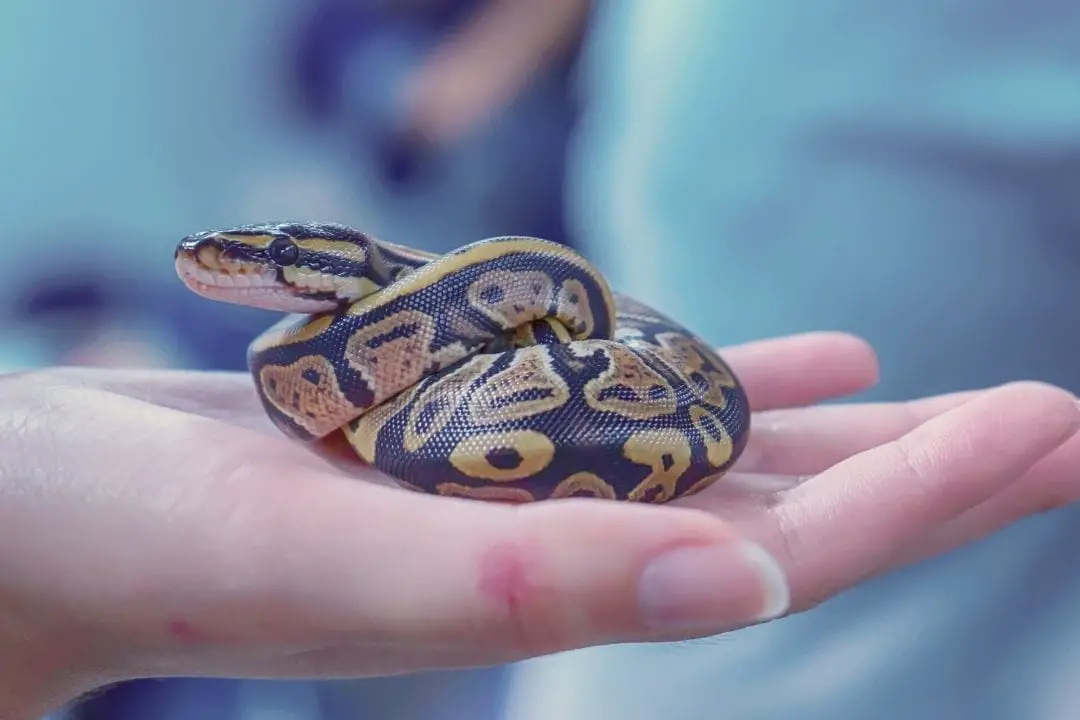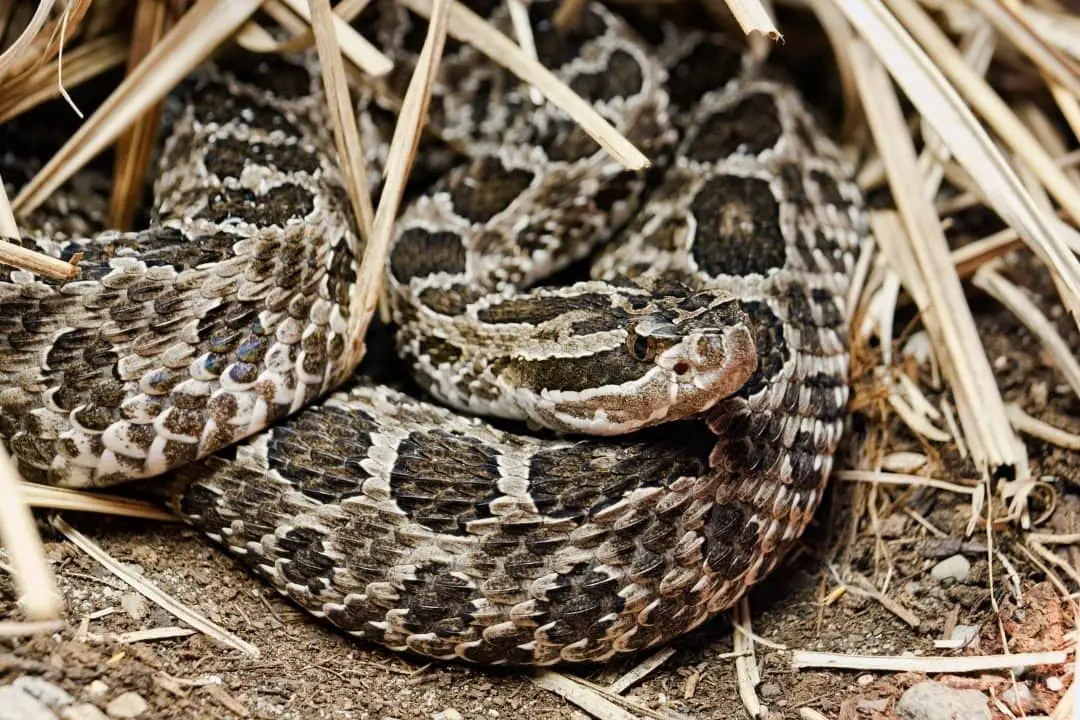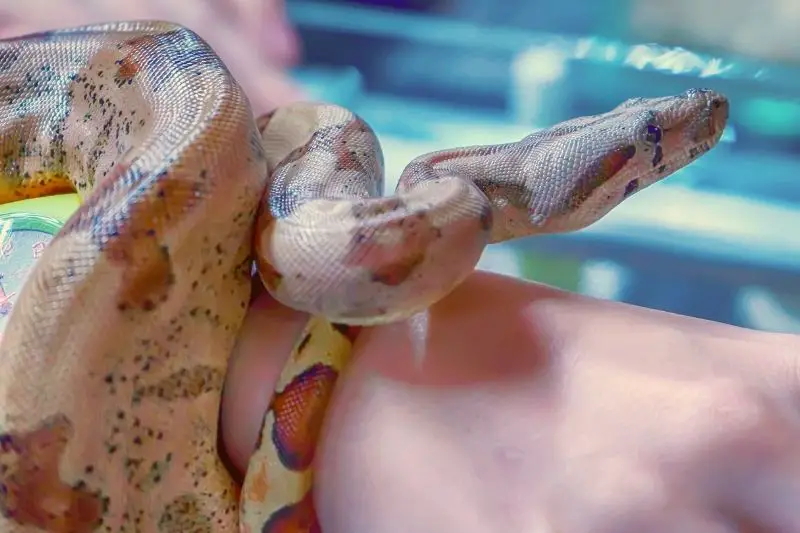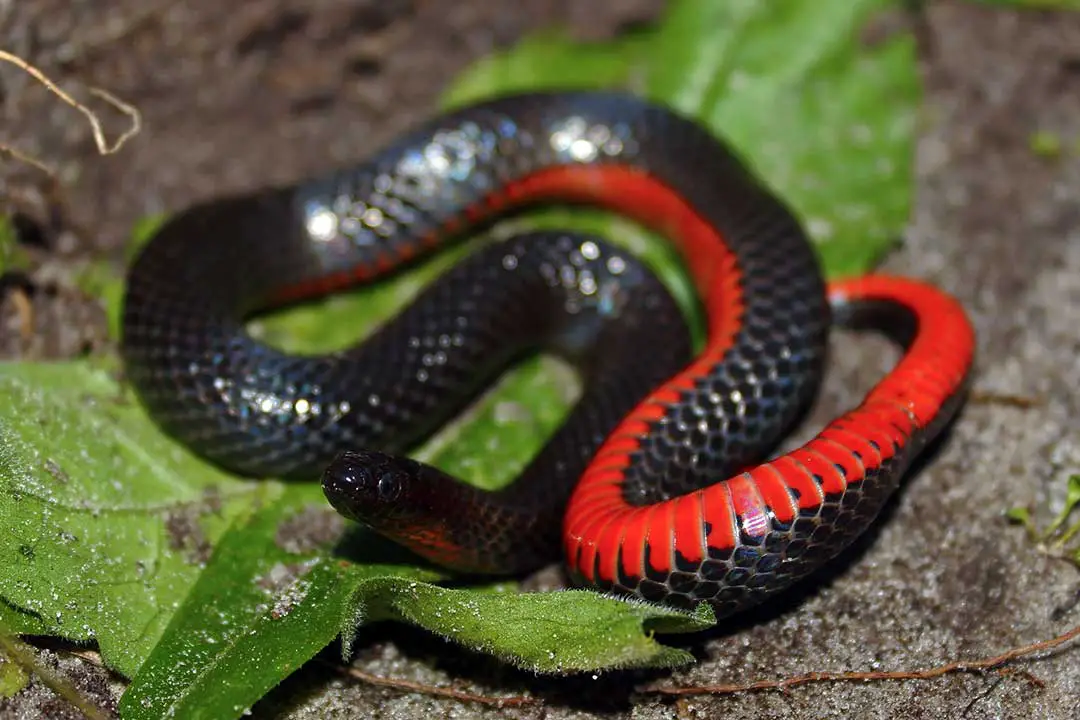Some people love giant snakes and have room for them. Other people would prefer to keep their pet snake on the smaller side.
Whether you don’t have much space available or prefer to handle smaller snakes, there are many species of snake that may appeal to you.
Please note that smaller snakes may have special needs. They will require smaller prey that may be difficult to find.
You should also note the adult size of the snake. Many snakes start off at under 2 feet long but can grow to be between 5 and 10 feet long depending on the species.
This article will only go over species that can easily be found in the pet trade as captive-bred animals. While there are smaller snake species, they are either unavailable to the average person or may not survive well in captivity.
Wild-caught snakes frequently have parasites or do not adapt well to captivity, so we will not recommend any and encourage you to only buy captive-bred.
This list will also note how much experience is needed to keep the species.
- 1. Pygmy Python
- 2. Scarlet King snake
- 3. Ribbon Snakes
- 4. Common Garter Snake
- 5. Checkered Garter Snake
- 6. California Red-Sided Garter Snake
- 7. Kenyan Sand Boa
- 8. Rosy Boa
- 9. Tricolor Hognose
- 10. Western Hognose
- 11. Madagascar Cat-Eyed Snake
- 12. Arizona Mountain Kingsnake
- 13. Banded Watersnake
- 14. Nuevo Leon King snake
- 15. African House Snake
- 16. Milk snake
- 17. Children's Python
- 18. Colombian Rainbow Boa
- 19. Spotted Python
- 20. Green Tree Python
- 21. Corn Snake
- 22. Ball Python
- 23. Ringneck snake
1. Pygmy Python
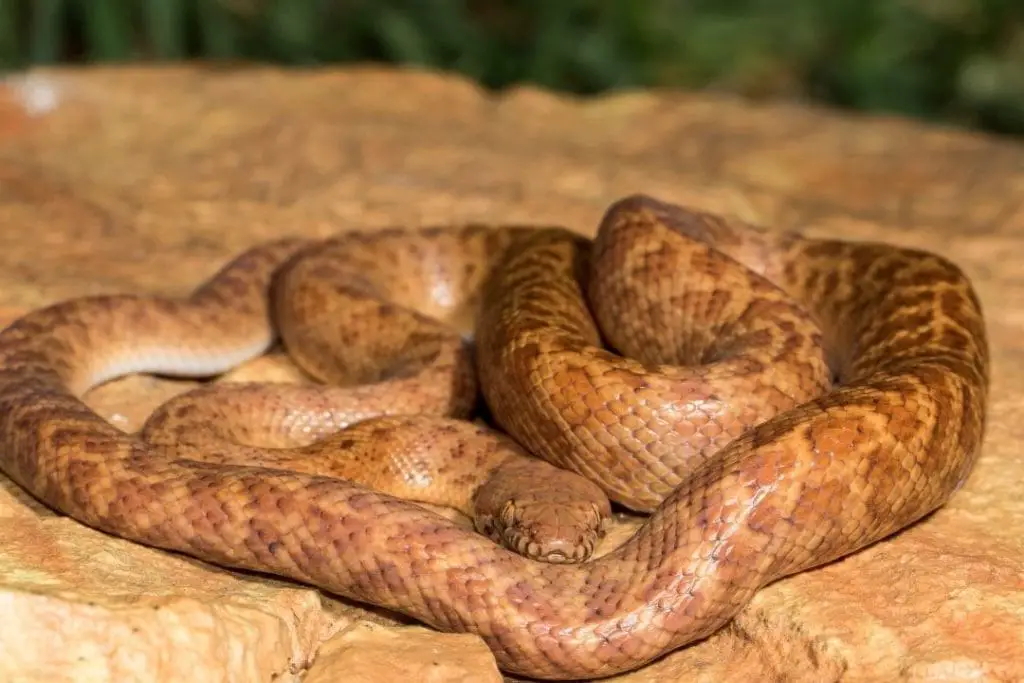
The pygmy or anthill python (Antaresia perthensis) is the smallest python species and can be found for sale rarely. They range between 16 and 24 inches long as adults.
They are native to the Pilbara region of Australia. In the wild, these snakes eat reptiles as juveniles and switch to frogs and small mammals like bats as adults.
They can be somewhat picky feeders.
Look into scenting your mice with either shed lizard skin or “lizard juice” scenting liquid. They are intermediate to advanced snakes since they can be hard to keep at the exact right level and are harder to acquire.
2. Scarlet King snake
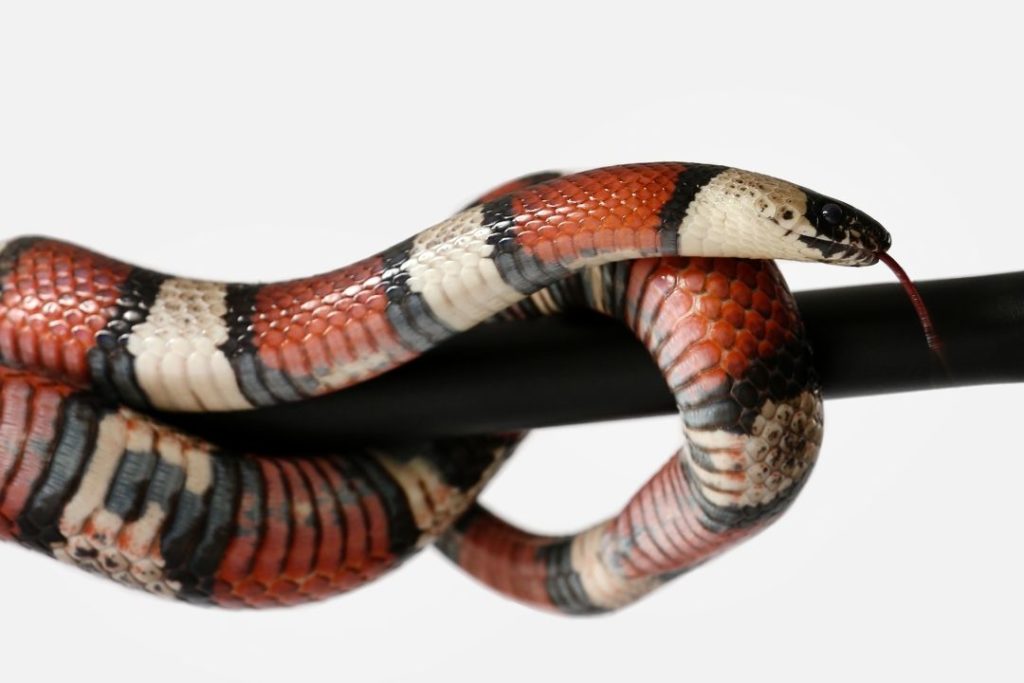
The scarlet kingsnake (Lampropeltis elapsoides) is the smallest kingsnake.
They tend to be 14-20 inches as adults, but some individuals can get up to 29 inches long. Like all king snakes, they make great pets (see my king snake care sheet here).
They are voracious feeders. These are great beginner snakes. While they are coral snake mimics, kingsnakes are not venomous and are harmless to humans.
These snakes will eat nearly anything including other snakes. They do require smaller prey than other snakes due to their size. Some young snakes may need their pinky mice cut up.
3. Ribbon Snakes
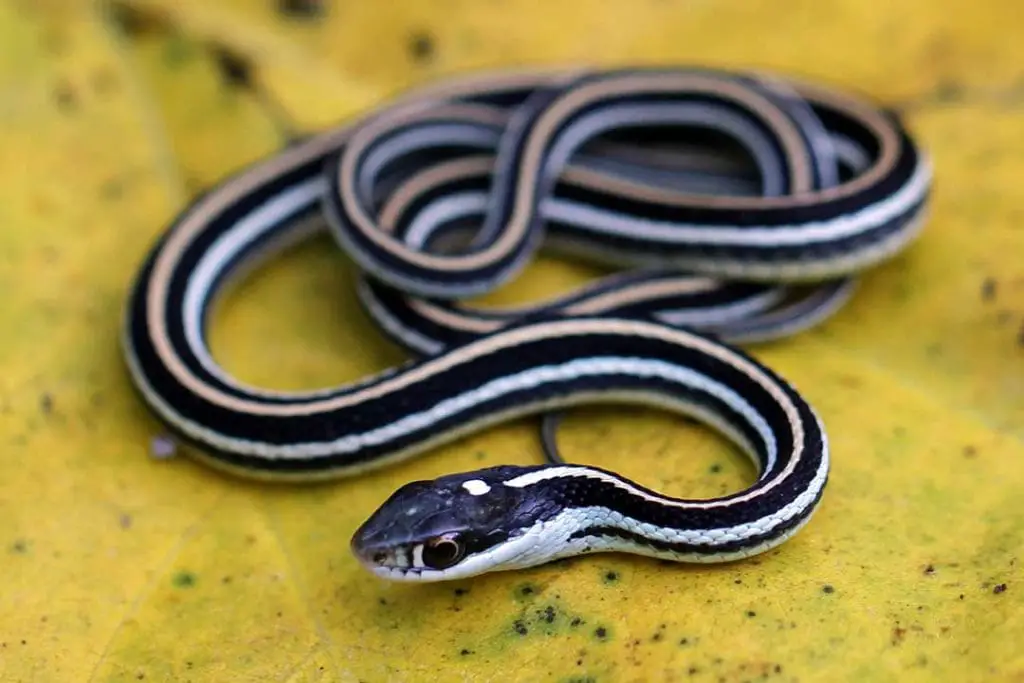
Ribbon snakes (Thamnophis sauritis) are small members of the garter snake genus. They are only 16-28 inches as adults and very slim.
These semi-aquatic snakes are easy to care for and are one of the best pet snake species for those who don’t want to feed rodents.
Ribbon snakes will also eat fish and worms, but you need to be careful with selecting prey.
These snakes are gentle and bite only as a last resort. They will defecate on you if they are stressed, but positive handling sessions can help.
4. Common Garter Snake
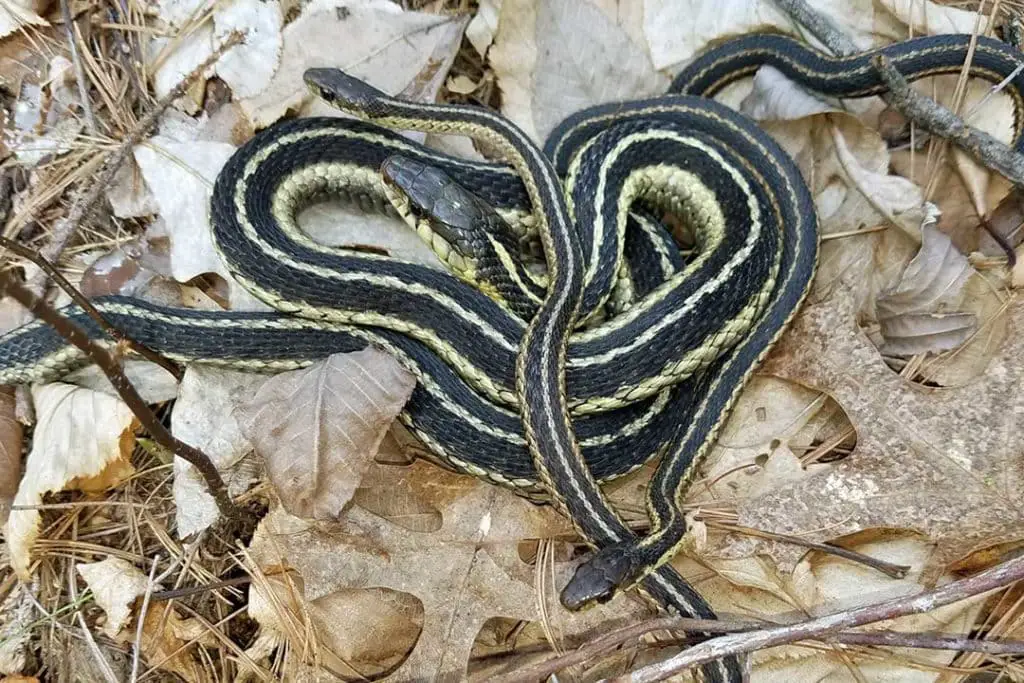
The common garter snake (Thamnophis sirtalis sirtalis) is a small snake that is native to the United States.
They are between 18 and 26 inches long on average, but some large adults may be up to 42 inches. These are easy beginner snakes that eat a wide variety of prey.
They are a bit harder to handle and need more humidity than other beginner snakes – see my care sheet for garter snakes. They are very similar looking to ribbon snakes but are a bit thicker and heavier as adults.
Most subspecies will also be a bit thicker. These snakes do have venom, but it is rare for a human to be envenomated and it is not medically significant. The worse effects will be pain and swelling. You can offer a wide variety of prey but mice tend to be the most nutritionally complete. If you feed your garter snake fish, be prepared for the poop to smell worse and be a but harder to clean.
5. Checkered Garter Snake
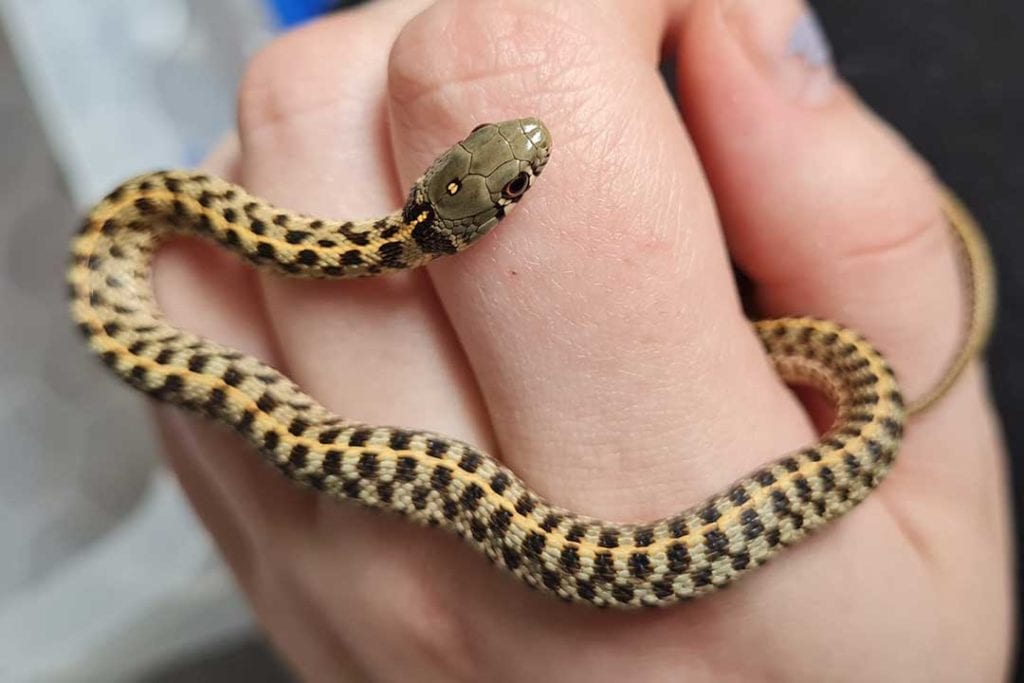
The checkered garter snake (Thamnophis marcianus) is native to the southwest of the United States and parts of Mexico and Central America. They are common captive snakes that come in a few morphs.
They are 18-24 inches long on average but they can be up to 42 inches long. They have similar care and behavior to other garter snakes.
This makes them a good snake for beginners to intermediate keepers. They do have a mild venom, but it is considered harmless to humans.
These snakes have a wide diet and you will need to offer a few varieties of prey to make sure your pet has a balanced diet. Of note, never feed any reptile goldfish since they have an enzyme that will cause a vitamin deficiency.
6. California Red-Sided Garter Snake
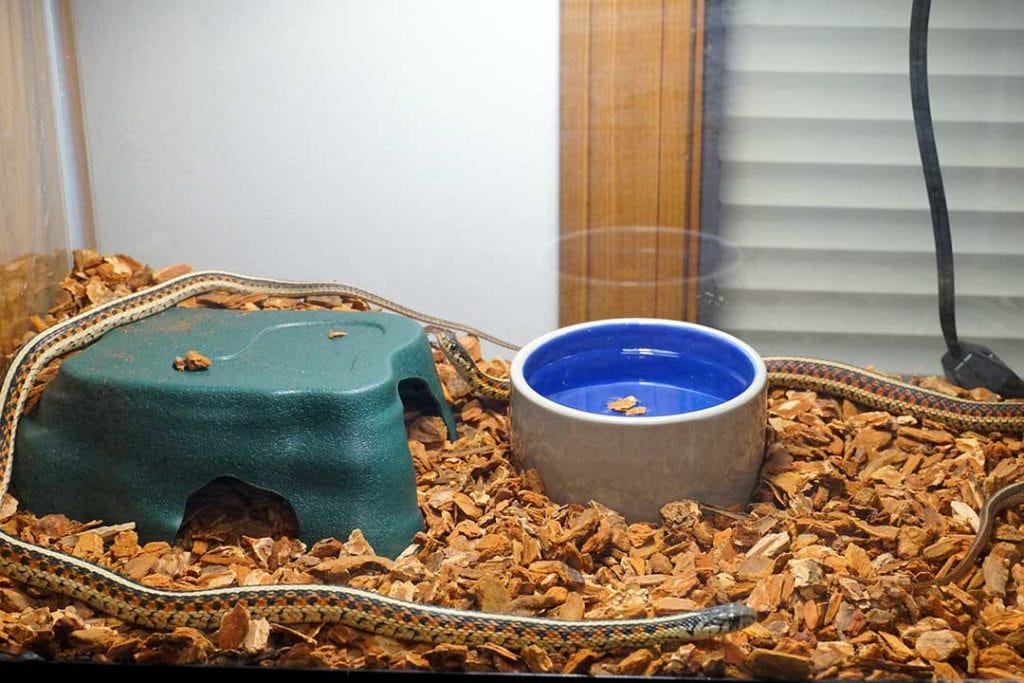
The California red-sided garter snake (Thamnophis sirtalis infernalis) has a pattern of blue stripes over a black and red background. They tend to be about 22 inches long but some large individuals can get up to 39 inches long.
They are easily confused with the San Fransico garter snake, but they are smaller and lighter. They live along the coast of California from Central to Northern California.
They have a wide diet and are not particularly picky in captivity. They are fairly easy to keep and breed. Garter snakes may be picky about prey type, so you may need to add vitamins or calcium every other feeding. They also tend to eat more often than your average python.
7. Kenyan Sand Boa
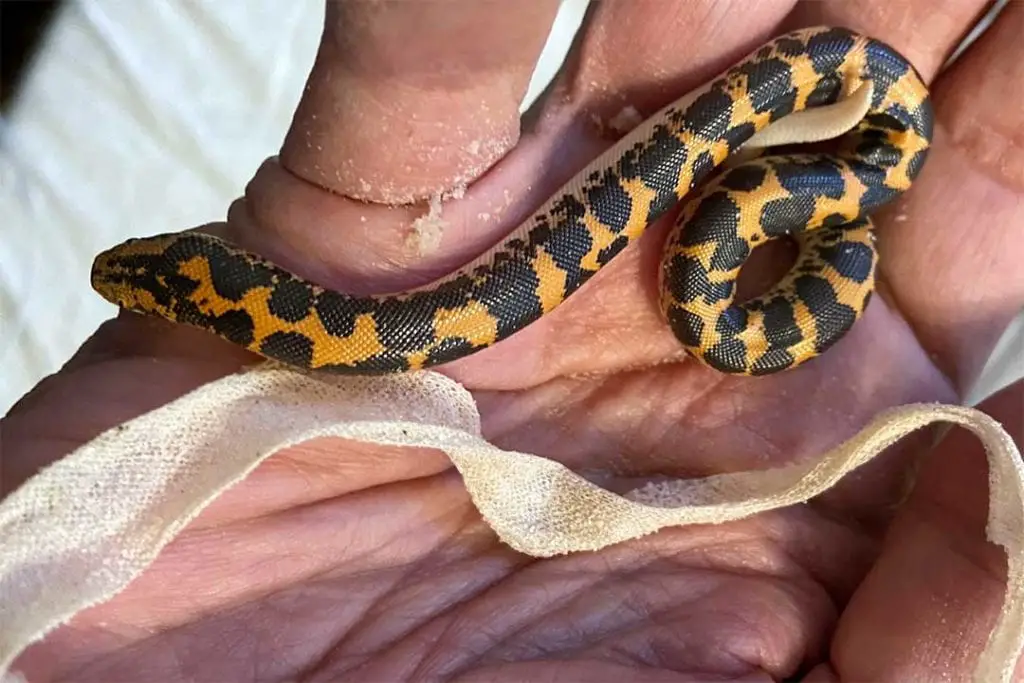
Kenyan sand boas (Gongylophis colubrinus) are burrowing snakes native to Africa. These are popular snakes since they are small and docile snakes, see my care guide for kenyan sand boas here.
Males are smaller and tend to be between 18 and 24 inches long. Females are longer and thicker and can be up to 30 inches.
These are burrowing snakes that prefer loose, sandy soil as a substrate. Do not use pure sand since it can injure or dehydrate your snake.
The sand in their native habitat has more soil in it than common sand used for reptiles. They absolutely need at least 3 inches of the substrate to burrow into.
They are easy snakes to care for but they need higher temperatures for their basking areas and need care during handling. Since they tend to flail if frightened during handling and can’t hold on, you need to take extra care not to drop them.
8. Rosy Boa
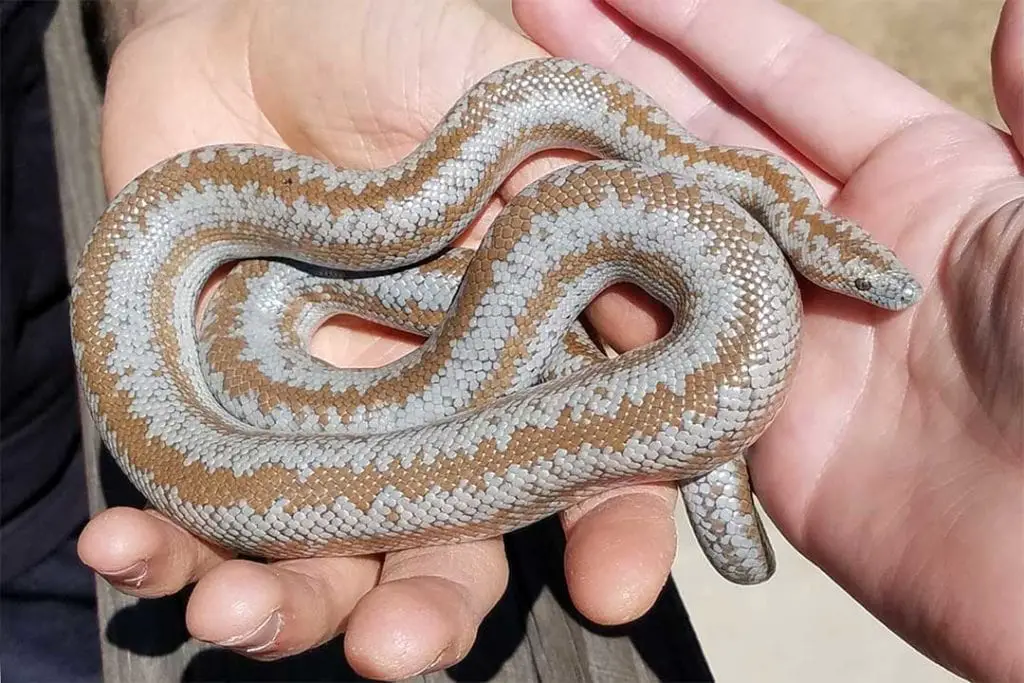
Rosy boas (Charina trivirgata) is a small live-bearing snake native to California, Arizona, and Mexico.
Most snakes stay between 17 and 34 inches long, but some snakes from the coast of California can get up to 44 inches long.
They are incredibly docile snakes that readily accept mice. You can find a wide variety of captive-bred snakes. You can find unique localities and morphs to give your snake a unique look. See my complete care and enclosure guide for rosy boas here.
These snakes are most commonly available in their native range but the are breeders in other states. They can be a bit more difficult to find in other countries.
9. Tricolor Hognose
The tricolor hognose (Xenodon pulcher) is a small burrowing snake that has just become available as a captive-bred animal. They are typically between 24 and 30 inches long.
These snakes are native to the Gran Chaco region of South America.
They are known for their banded appearance and upturned snout. Like other hognoses, they prefer sandy soils.
They are best for intermediate keepers since they are very prone to fatty liver disease. They should be fed quail, reptiles, or cased links made for reptiles. Use the ones with lizards or frogs as the ingredients.
They do tend to strike and puff up as defensive behaviors. This can put off people who aren’t experienced with snakes. They need a minimum of a 3-foot long enclosure with a deep substrate.
10. Western Hognose
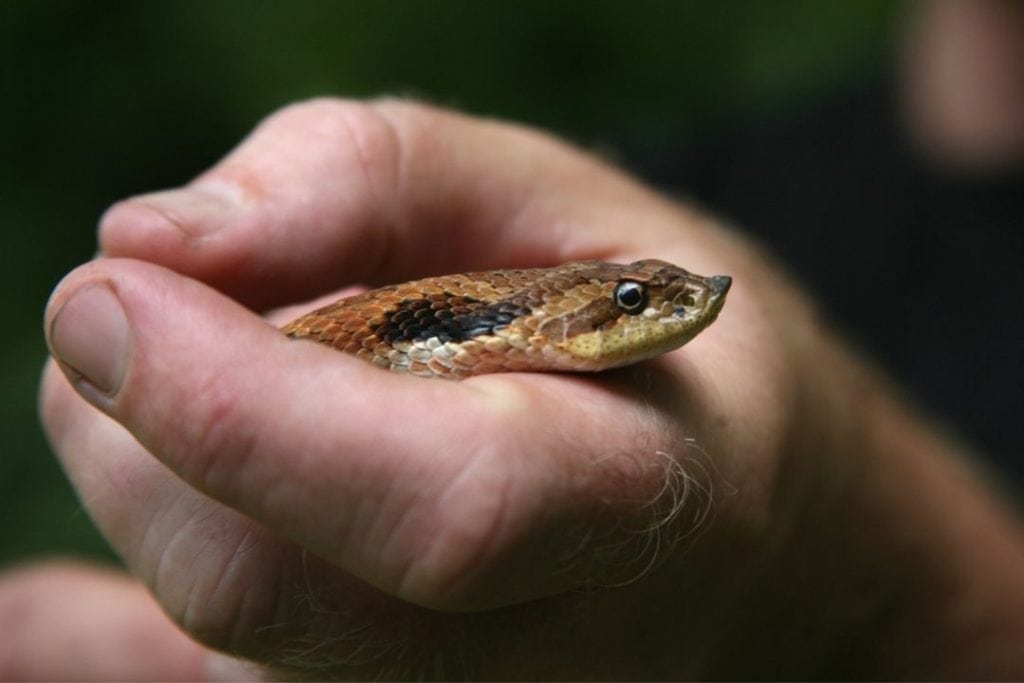
Western hognoses (Heterodon nasicus) is the most common type of hognose snake in captivity, see my care sheet for western hognose snakes here.
These snakes that stay small are typically around 2 feet for males and 3 for females. They are known for their upturned snout and burrowing behavior. They need a deep substrate.
They are popular since they are diurnal and docile once they are used to handling. Hognoses can be hard to feed as babies since they may be too small for newborn mice.
You can look into options like reptile sausages. This are made of whole prey that is ground up and can come in very small sizes.
11. Madagascar Cat-Eyed Snake
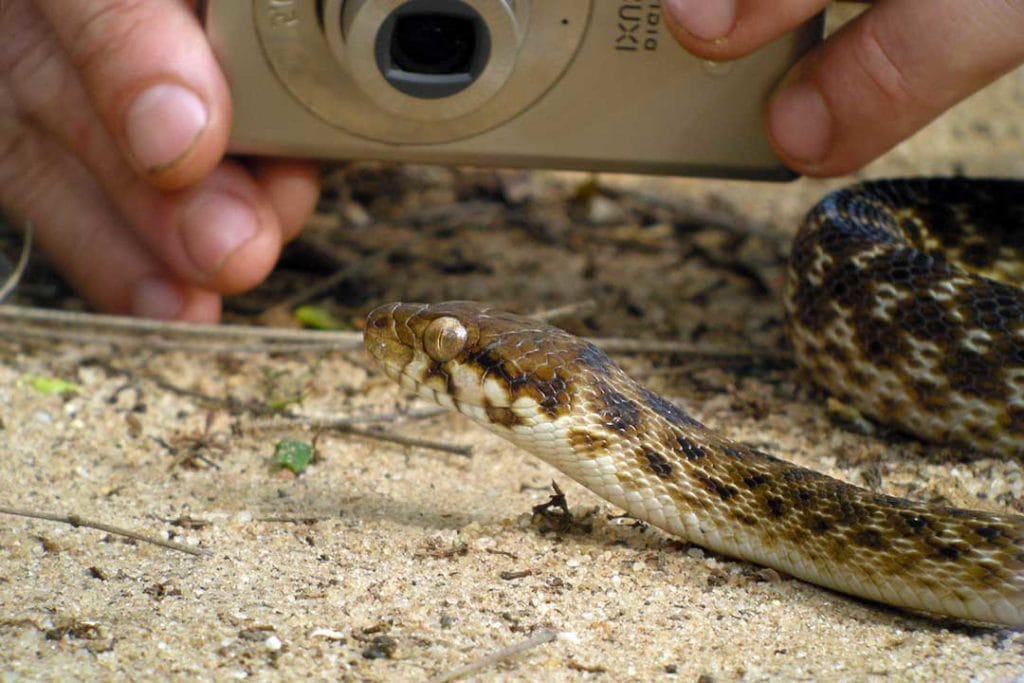
The Madagascar cat-eyed snake (Madagascarophis colubrinus) is a rarer snake that is best for advanced keepers.
Since they are so rare, they need an experienced keeper who can fine-tune the conditions of the snake. They can reach 1 meter or 3.5 feet long.
They are mildly venomous, but their venom will only cause a little pain and swelling unless you are allergic. They come in a few colors such as khaki, yellow, silver, and brown.
If you are not experienced with snakes, pick a non
venomous species. If you want something unique, this is a great option that won’t require a huge amount of space.
They are frequently not under bans of venomous snakes, but check your local laws. Since their venom isn’t dangerous, they aren’t always considered to be in the same category as rattlesnakes and cobras.
12. Arizona Mountain Kingsnake
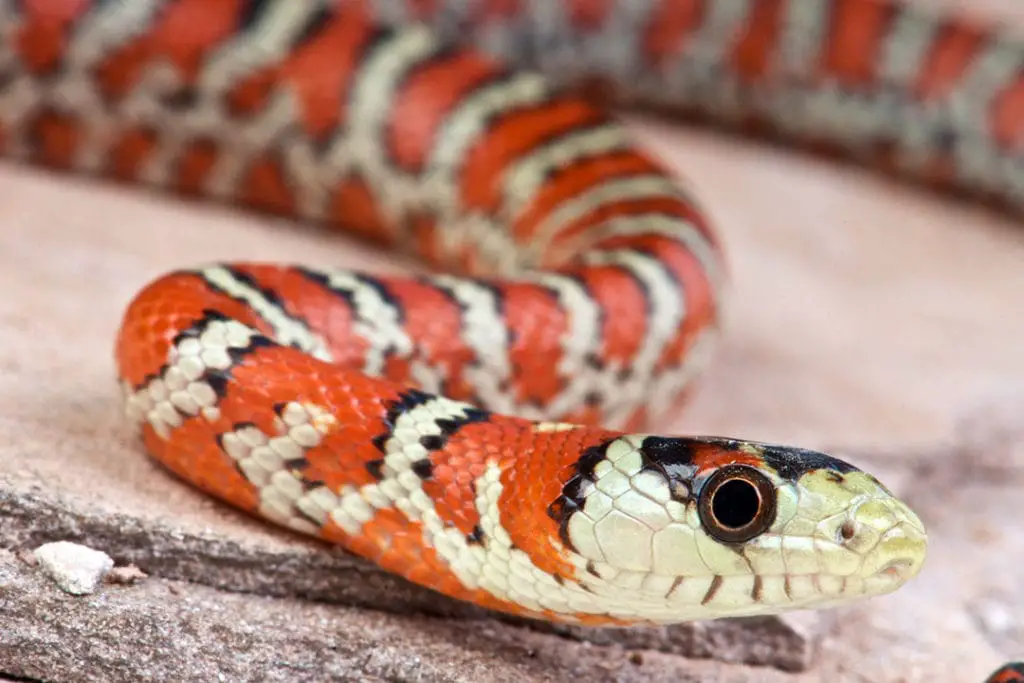
The Arizona Mountain kingsnake (Lampropeltis pyromelana) is a kingsnake species that can reach 3 feet long, but most snakes will be a bit smaller. The typical range is 18-43 inches long.
They have a banded appearance that makes them popular. They are great for beginners since they are not picky about food and are active snakes.
13. Banded Watersnake
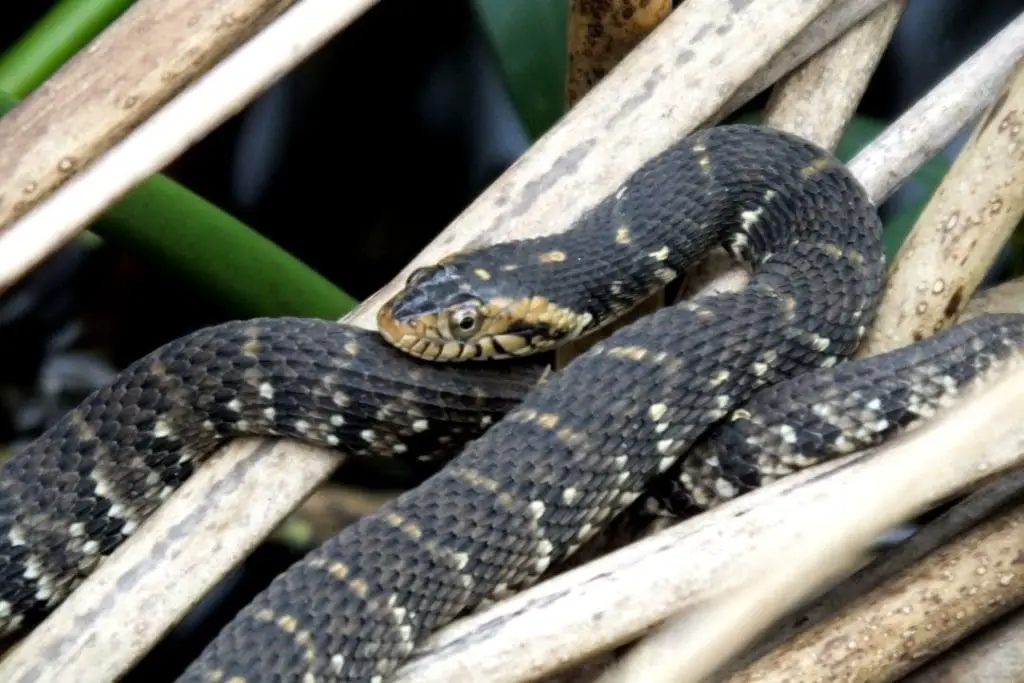
The banded water snake (Nerodia fasciata) is a water snake native to the southeastern United States. They are 24 to 42 inches long with females typically being larger.
They have higher care requirements such as high humidity. While they are semi-aquatic, they don’t require more than a larger water dish.
You can make an enclosure that includes water for swimming, but you need to make sure your snake has some dry area or it will suffer from skin blisters.
Most other species of North American watersnake can be around the same size, but do your research. They can have very different behaviors and needs.
14. Nuevo Leon King snake
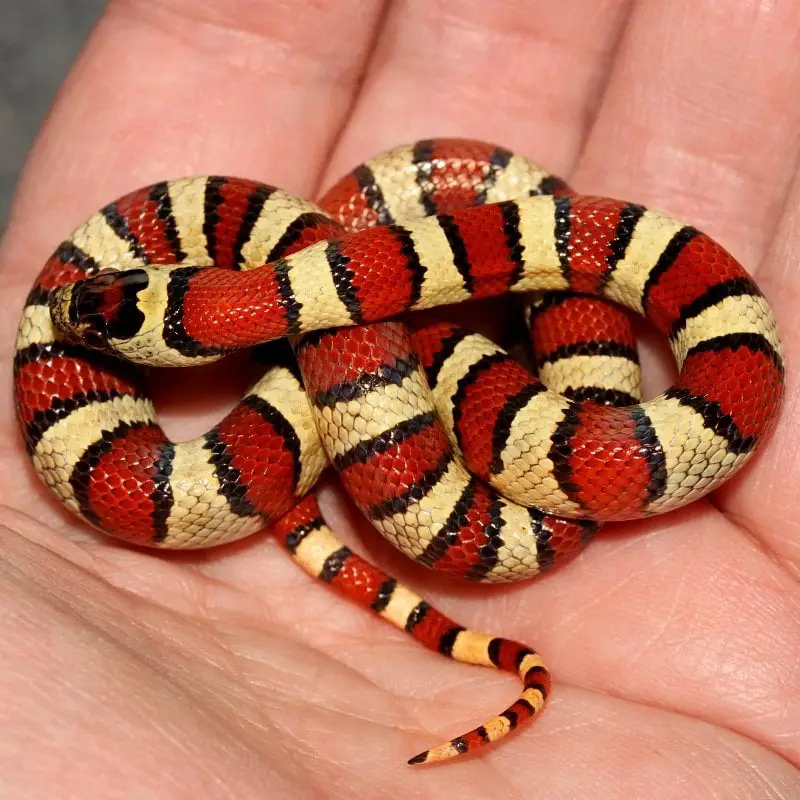
The Nuevo León king snake (Lampropeltis leonis) is also commonly called the variable kingsnake. These snakes have a max length of 4 feet, but most will be smaller.
They are commonly found as captive-bred snakes and have the kingsnake attitude in a smaller package. They are small and easy to care for like other kingsnakes.
Since they have a huge appetite that makes them less stressful for new keepers than many other species of snake. Many other kinds of kingsnake exist, but some get larger than this like the banded california king snakes. Do your research if you are looking at other species.
15. African House Snake
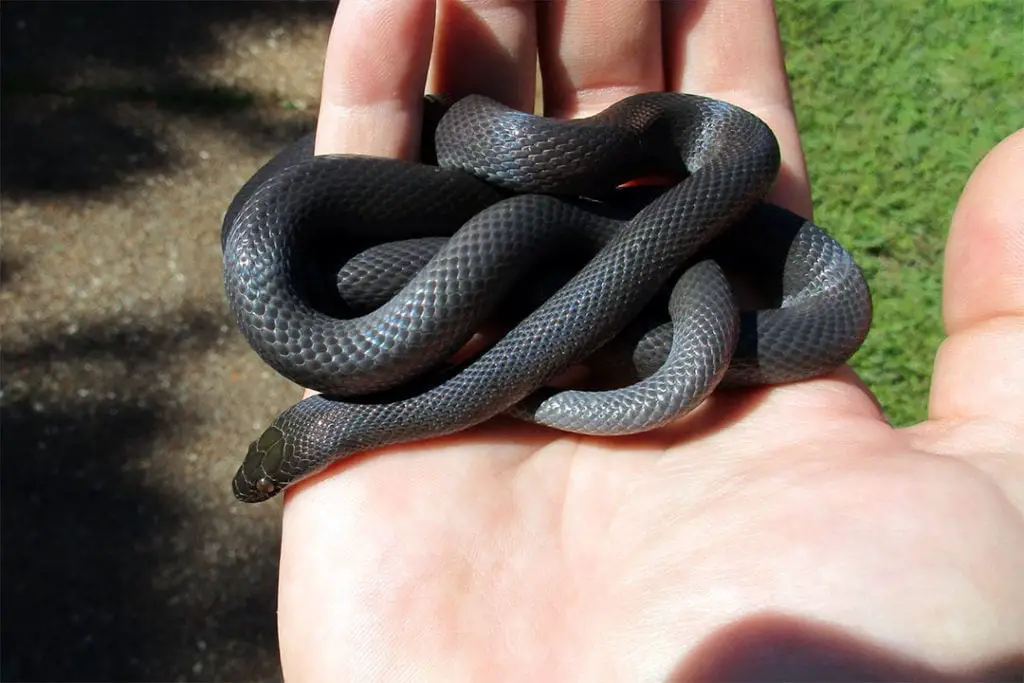
African house snakes (Boaedon fuliginosus) are somewhat uncommon snakes but are still easy to find as captive-bred animals, and one of my favorite colubrids.
These are slender snakes that measure 2-3 feet for males and 3 and 4.5 feet for females. They are called house snakes since they are found near human dwellings where they hunt rodents.
They are good for beginner to intermediate keepers, but they can be harder to find than other common beginner snakes. There are also many other snake species referred to as house snakes.
Make sure you know what species you have to provide propert care – see my care sheet for african house snakes here. Some species like the african egg eating snake may also get much larger than you are expecting.
16. Milk snake
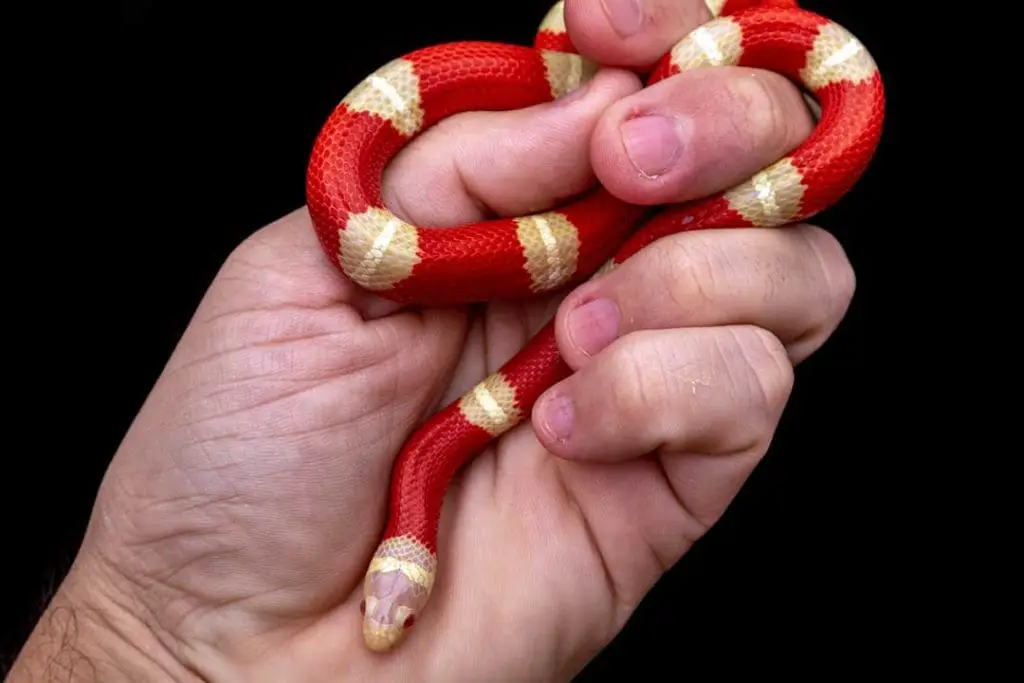
Milk snakes (Lampropeltis triangulum) are members of the kingsnake genus. There are numerous subspecies with different appearances and sizes, but they max out at 52 inches long.
They are thin and eat well like other kingsnakes, making them a good choice for beginners.
Common varieties include the Sinaloan milk snake, Pueblan milksnake (not to be mistaken with the venomous coral snake) and Nelson’s milksnake.
You can find many morphs in different subspecies as well as wild-type individuals. Be sure you research the exact species you want. They can have different requirements and maximum sizes.
17. Children’s Python
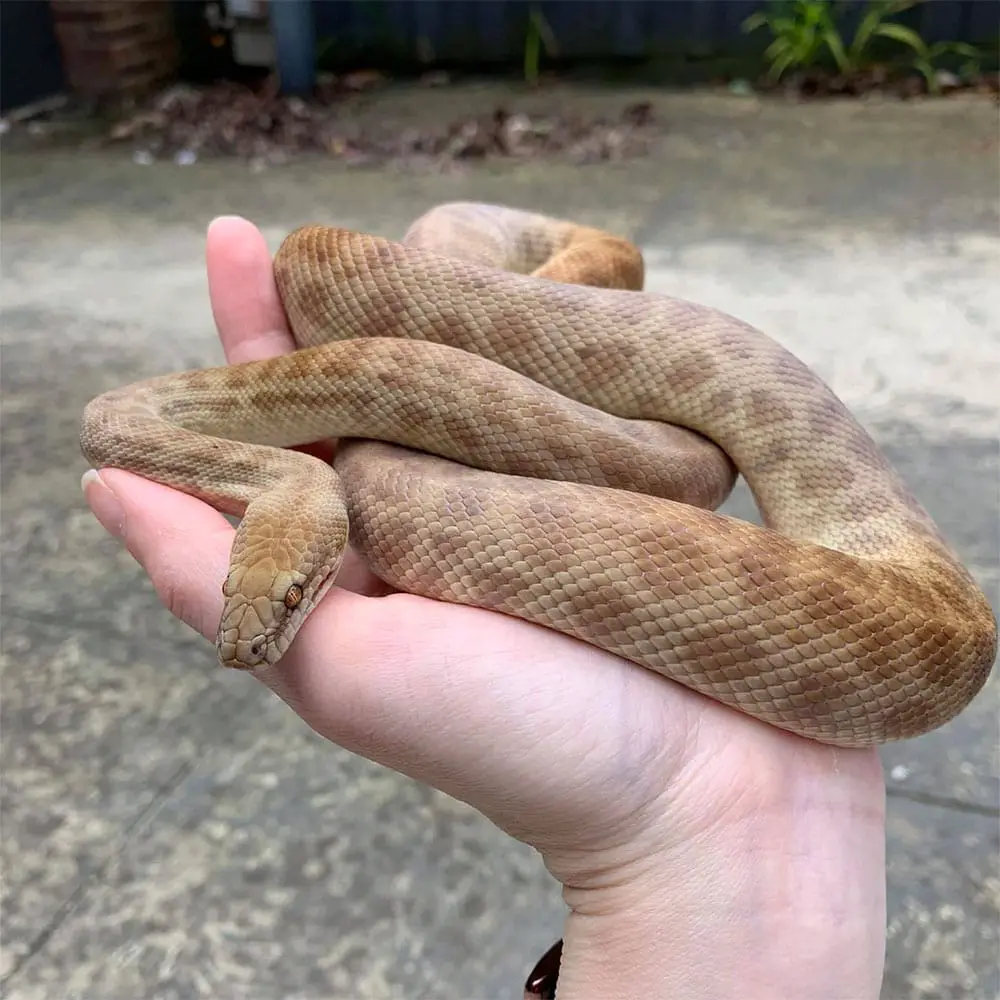
Children’s pythons (Antaresia childreni) are named for the mentor of the person who first wrote about the species.
They are only found as captive-bred outside of their native Australia since it is illegal to export wild-caught snakes.
The exact size will depend, but most will be between 3 and 5 feet long as adults. They have a docile personality and fairly easy care requirements that make them great pets.
They can be somewhat hard to find depending on your region. They are fairly common in Australia and have a range of colors available. Outside of the country, they are only found as captive-bred animals. There are few if any morphs available.
18. Colombian Rainbow Boa
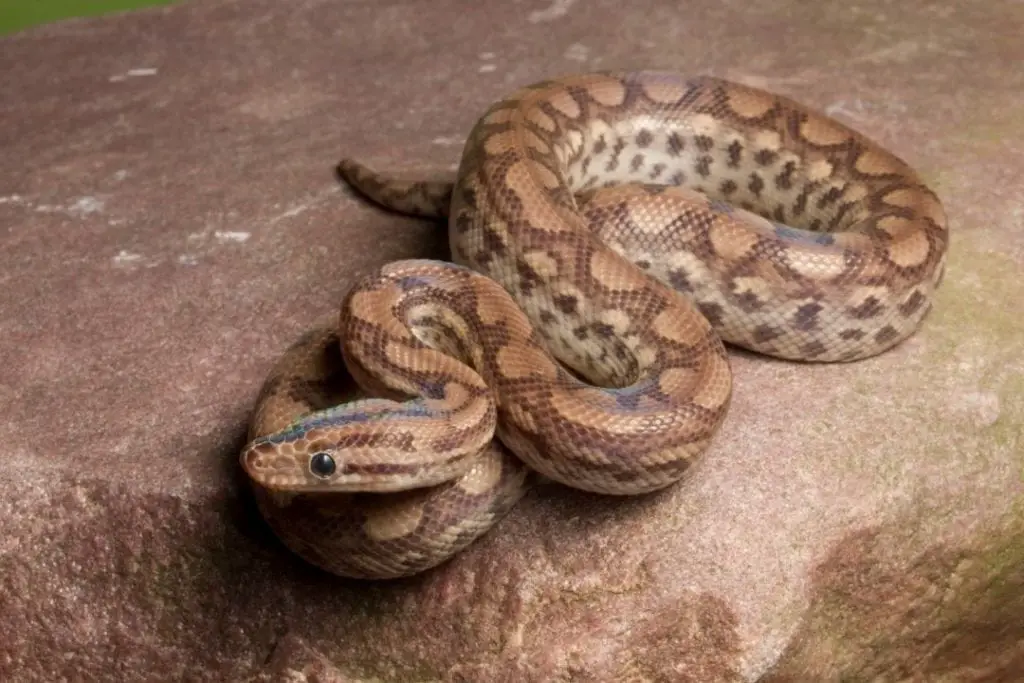
The Colombian rainbow boa (Epicrates maurus) is the smallest of the rainbow boas.
They are 3 to 5 feet long on average. They are known for the iridescent sheen of their scales. They are best for intermediate keepers since they do not tolerate care mistakes as well.
These snakes that stay small are also less docile and may be hard to handle if you do not have experience with snakes. These snakes are typically kept as display animals since they frequently prefer to be left alone.
Rainbow boas are semi-arboreal and require some climbing surfaces. These snakes also benefit from lighting that shows off their unique sheen. see my brazilian rainbow boa care and enclosure guide.
19. Spotted Python
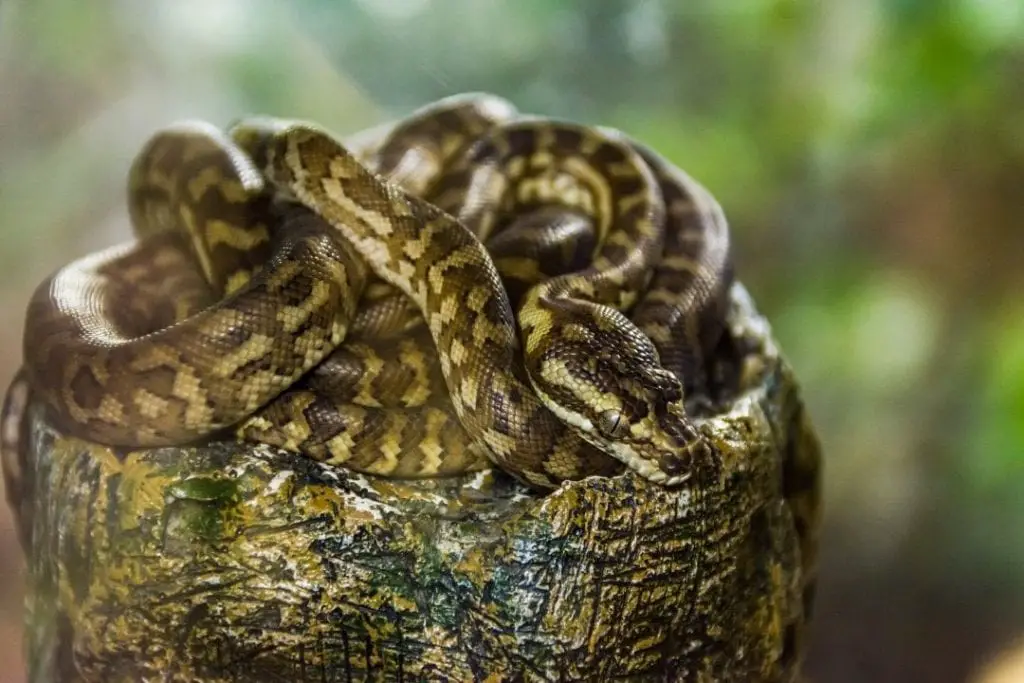
The spotted python (Antaresia maculosa) is another Australian python. These are the largest of the genus, but they stay between 39 and 55 inches on average.
They are nocturnal and semi-arboreal, so they require some climbing surfaces. They are more popular in the native Australia, but they can be found in other countries.
Only the Australian spotted pythons are actually A. maculosa. Snakes from Papua New Guinea were once considered the same species, but it has been determined that they are a different species now called the Papuan spotted python.
There are very few morphs available outside of Australia since any morphs derived from wild-caught snakes cannot be exported.
20. Green Tree Python
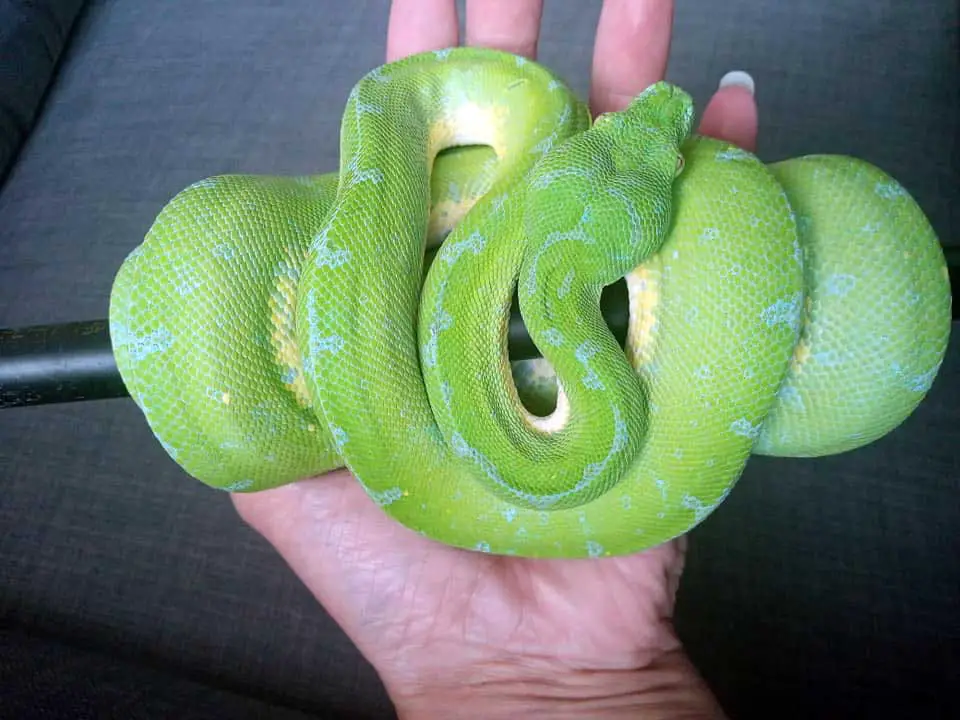
The green tree python (Morelia viridis) is an arboreal snake that goes through a massive color change during its life.
Baby snakes can hatch out red or yellow, but will typically change to their adult coloring before they reach a year old. They average 5 feet, but the record is 7 feet.
These snakes are considered to be intermediate snakes since they are arboreal and need specific care. They require different caging and heating than most snakes.
These small snakes also may not tolerate handling. It is best to assume your green tree python will not tolerate handling. This is one of the smaller tree pythons and it tends to be more docile than other arboreal snakes.
21. Corn Snake
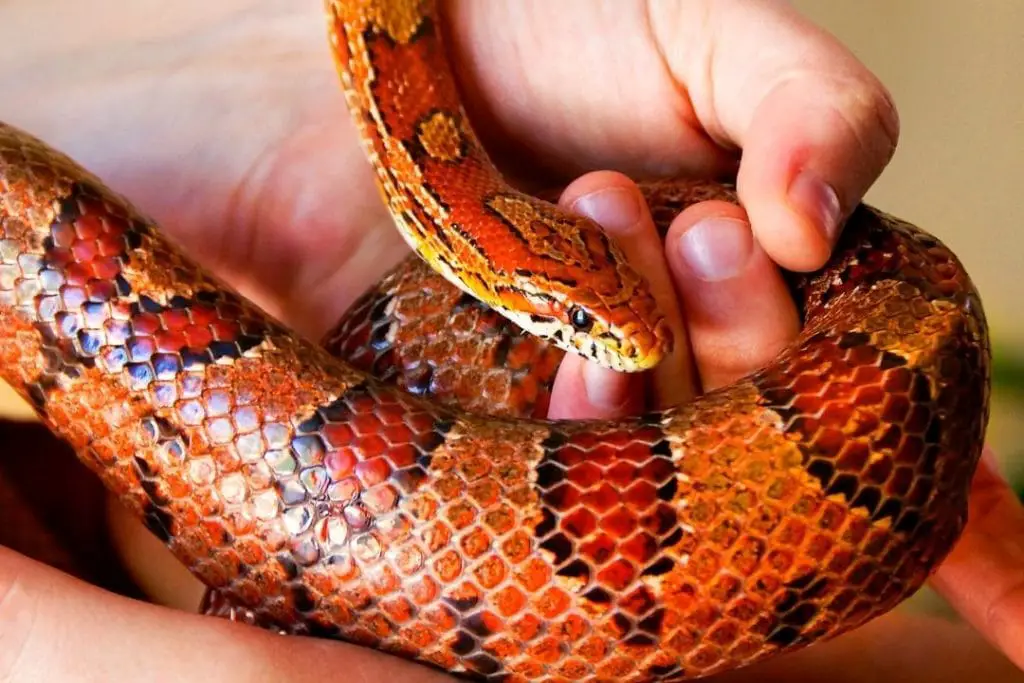
Corn snakes (Pantherophis guttatus) are one of the best snakes that stay small for beginners. They tend to be between 2 and 6 feet long with slender bodies.
The average for an adult is 4-5 feet long. They are flighty as babies but settle down to make amazing pets. They tolerate care mistakes well and stay easy to handle even as adults.
Since they are so common, they come in a wide variety of morphs. This means you can find a snake that should appeal to you.
Corn snake enclosure and care requirements are beginner friendly too.
These snakes are native to the southeastern United States. this does mean that you may not be able to own one in their native range. Georgia bans owning native snakes like the corn snake to help protect wild populations.
22. Ball Python
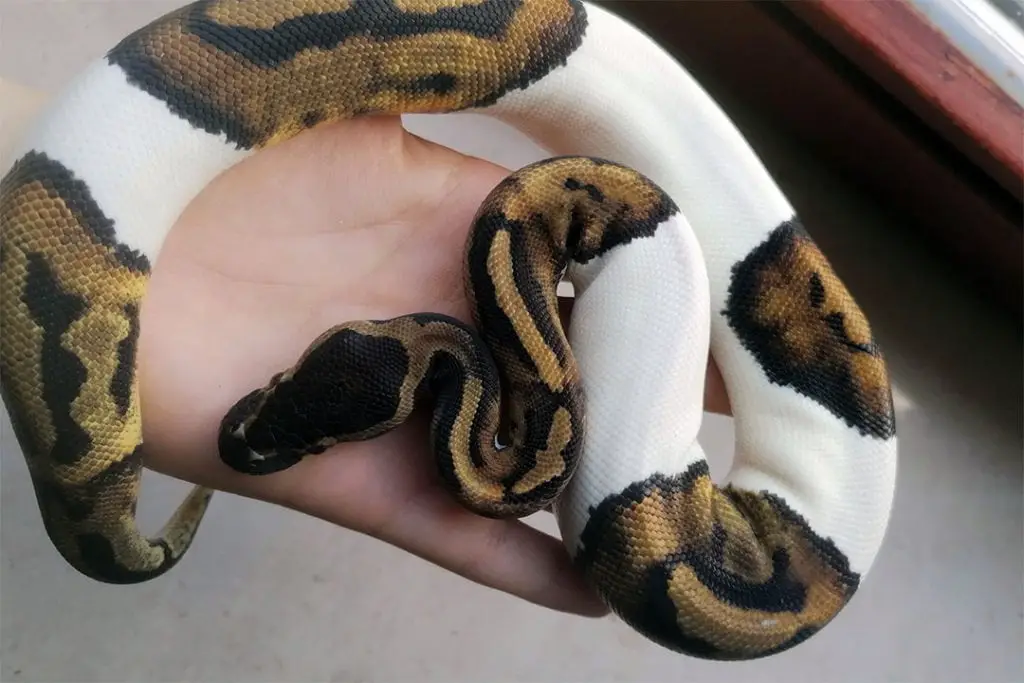
The ball python (Python regius) is one of the most popular pet snakes.
Males tend to be smaller and lighter than females. Most snakes will be between 4 and 5 feet long, but they max out at 6 feet. They typically weigh around 3 pounds, making them heavier than other snakes.
They tend to be incredibly docile, preferring to ball up and hide rather than bite. They can be picky about their food and humidity, so they can be tricky for new owners.
These small pet snakes have the most variety in color since they have been selectively bred for decades. They need a larger enclosure at a minimum of 4 feet for a male since they are prone to obesity if they do not have enough space to exercise.
These very small snakes are semi-arboreal and require some space to climb. They are also prone to stress so they need more hides and clutter to feel secure. See my ball python enclosure and care guide here.
With all these in mind, the ball python is most likely the most popular pet snake for good reasons. They are very docile, relatively easy to care for and stunning to look at.
They are in essence a big snake in a small package.
23. Ringneck snake

Ring neck snakes are one of the smallest pet snakes you can find. Their adult size is about 15 inches and they can thrive in smaller enclosures. They are fun to look at but a bit particular to care for.
Ringneck snakes will need very small preys, like live insects or piny mice. It isn’t as convenient as other pet snakes on this list that will happily eat frozen rodents.
Ring neck snake likes to hide but they will tolerate some (careful) handling.
Conclusion
These snakes all make good pets if you want a smaller pet snake. Remember that snakes need to be able to fully stretch out. It is a common myth that snakes will stay the size of their enclosure.
A snake that can’t stretch may end up with deformities that prevent it from ever stretching out. If you don’t have much space, stick with the smallest snakes.
There you go, a good number of pet snakes that stay small to choose from! Please always get captive bred snakes!
We hope this helped you learn more about small pet snake species. Do you think I should have included the bimini blind snake, or the western hognose snake? The rough green snake and smooth green snake were contenders too.
If you have any questions or comments, please leave them below.
